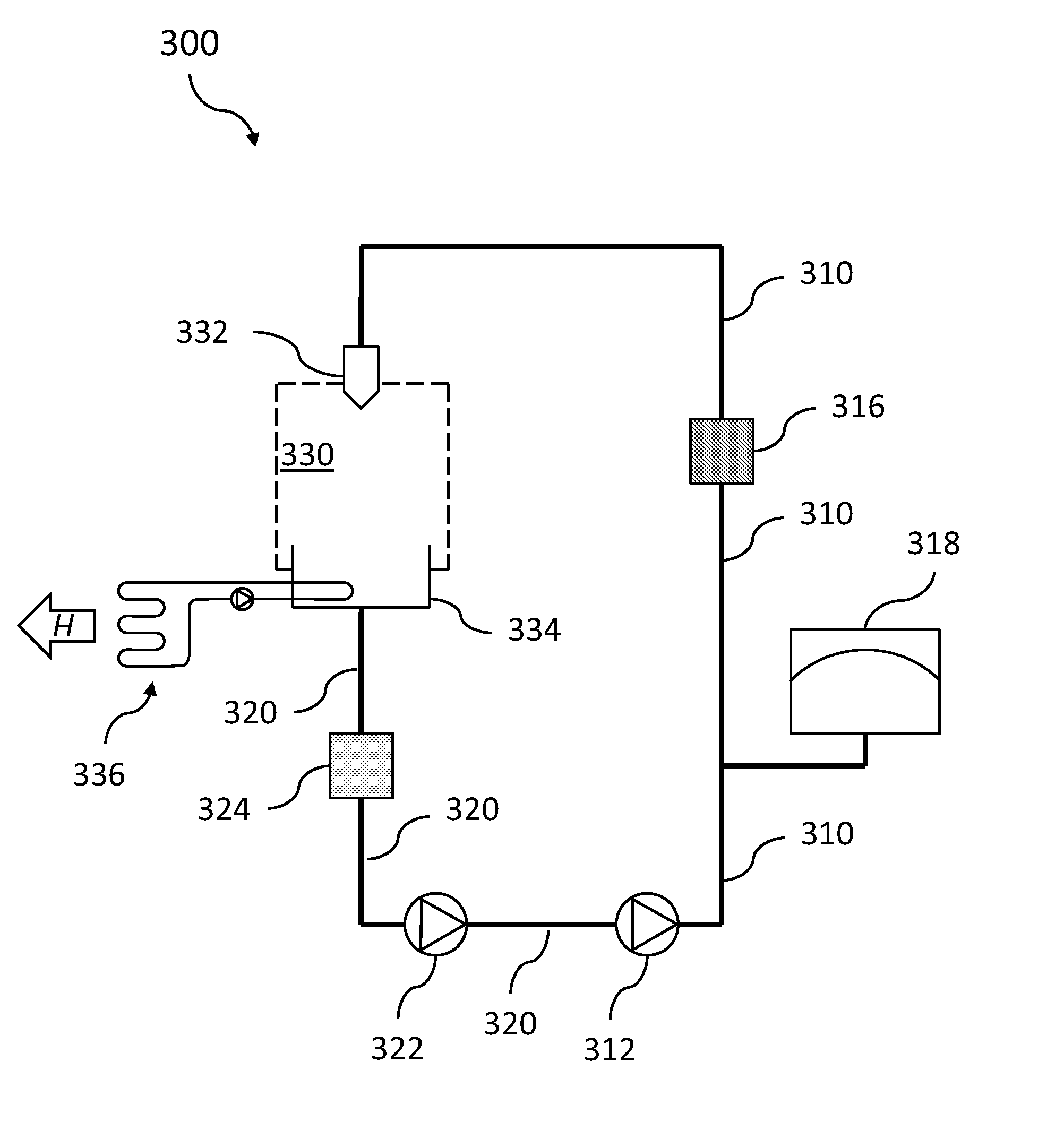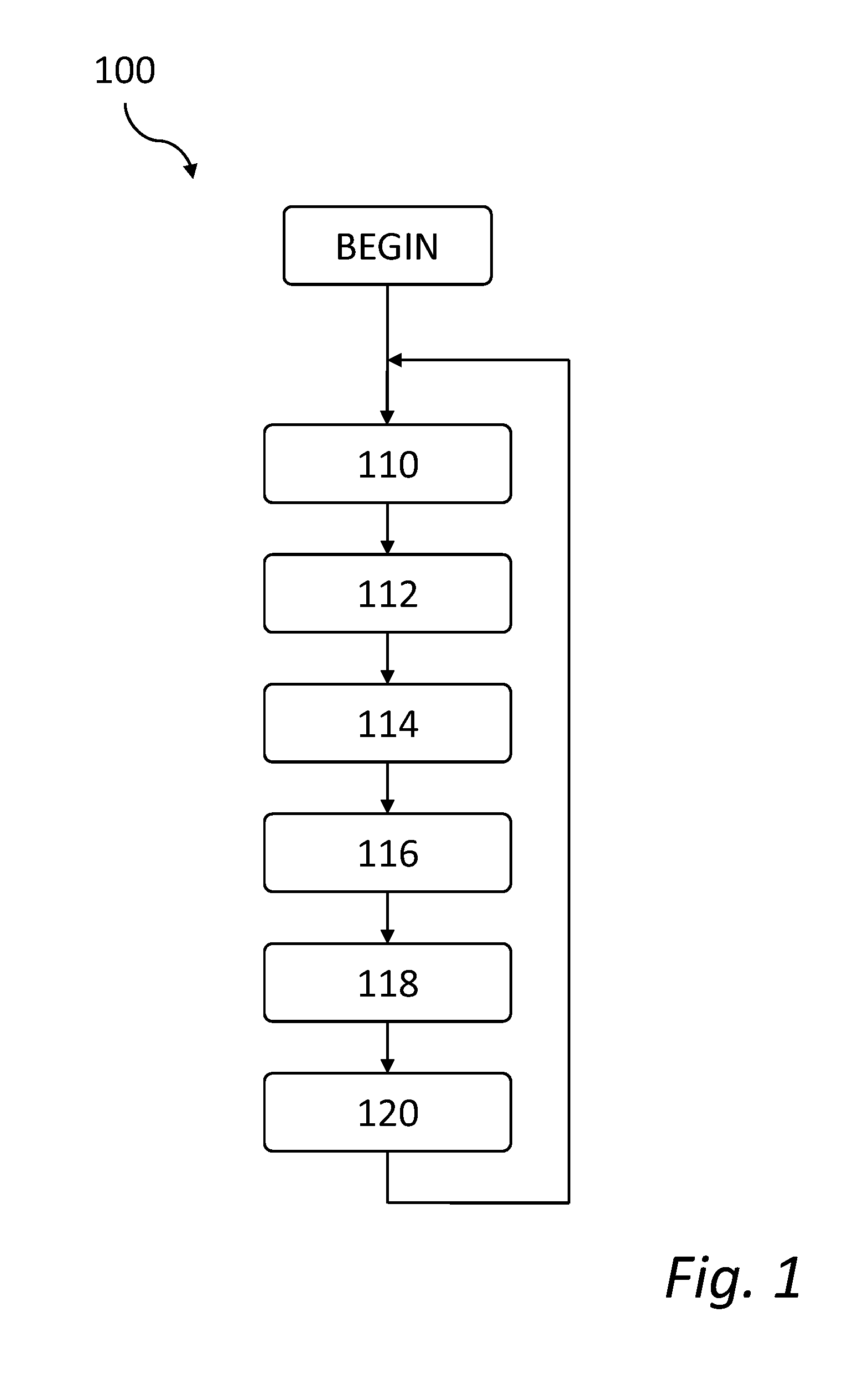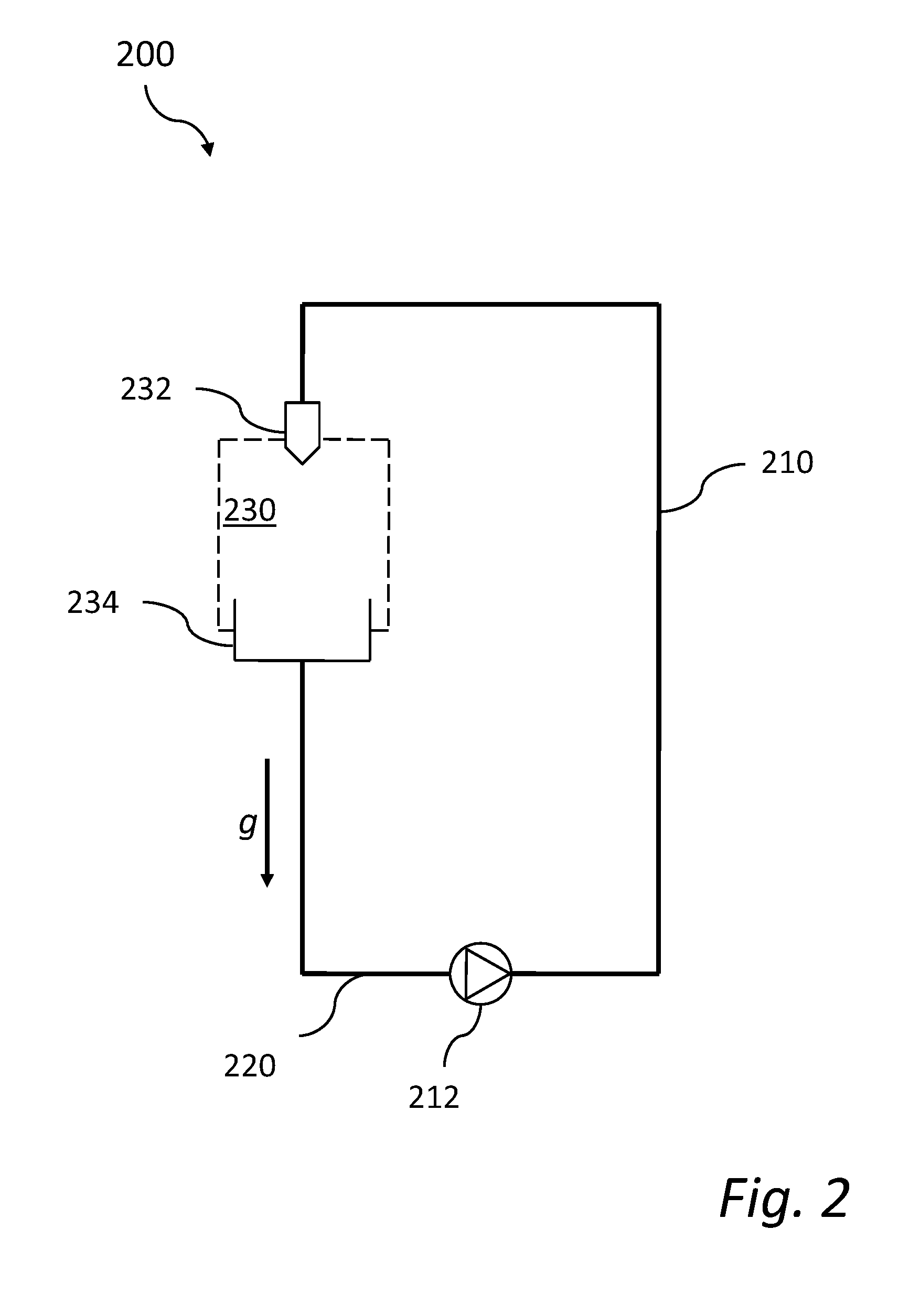[0006]A general object of the present invention is to provide a closed-loop system for supply of liquid metal to an interaction region where an electron beam impacts the liquid metal to generate X-rays. It is envisaged that the present invention will provide prolonged operational times before X-ray generation must be interrupted for maintenance or service.
[0010]Leakage of metal is another potential challenge of a closed-loop system for providing the liquid-metal jet. The result of leakage may be that metal is permanently lost to the exterior of the system, but also includes the case of metal solidifying in parts of the system that are inaccessible. For example, a mist of suspended liquid droplets may be produced at the exit of the
nozzle and at the point where the
liquid jet impacts the liquid contained in the collecting receptacle. If such mist, which is relatively mobile, deposits on an inner wall of the low-pressure chamber, it will be more or less permanently lost from the circulation. Moreover, if the low-pressure chamber is a pumped
vacuum chamber adapted to continuously evacuate gaseous or gas-
suspended particles therein, an amount of liquid may be expelled from the system this way. Finally, seals,
piping and pumps are all sources of potential leakage of liquid and therefore weak points of the circulation loop. From a user's point of view, leakage may release potentially
toxic gas, necessitate expensive replenishment of liquid, shorten maintenance intervals (particularly the periods between cleaning of the X-ray output window), deteriorate performance by spoiling the vacuum conditions, and generally make operation of the associated X-ray source more difficult for continuous periods of time. These challenges are addressed and mitigated by the present invention.
[0016]The pressure of the collected liquid metal is raised to a suction side pressure (
inlet pressure) for the high-pressure pump, in a second portion of the closed-loop circulation system located between the collection reservoir and the high-pressure pump in the flow direction (i.e., during normal operation of the system, liquid metal flows from the collection reservoir towards the high-pressure pump). The
inlet pressure for the high-pressure pump is at least 0.1 bar, preferably at least 0.2 bar, in order to provide reliable and stable operation of the high-pressure pump.The steps are then typically repeated continuously—that is, the liquid metal at the inlet pressure is again fed to the high-pressure pump which again pressurizes it to at least 10 bar etc.—so that the supply of a liquid metal jet to the interaction region is effected in a continuous, closed-loop fashion.
[0018]The step of raising the pressure of the collected liquid metal to a sufficient inlet pressure ensures good operating conditions for the high-pressure pump, enabling it to supply a steady
high pressure to the
nozzle and protecting it from losing its suction capacity. Preferably, the propagation speed of the liquid-metal jet through the vacuum chamber is at least 10 m / s. The liquid metal jet is generated so that the jet will be spatially continuous at the point where the electron beam impacts the metal jet. It is noted, however, that
breakup of the jet beyond the point where the electron beam impacts the target jet is generally acceptable since such late
breakup of the jet does not affect the generation of X-rays to any relevant extent; the possibility of such
breakup does not influence the
dimensioning of the nozzle.
[0022]As explained earlier, the X-ray
generation process produces a considerable amount of
excess heat. A high temperature may accelerate
corrosion and other types of deterioration of the system. In order to remove the
excess heat from the liquid metal there may be provided a cooler, such as a refrigerating coil thermally connected to the collection reservoir, adapted to
discharge excess heat delivered by the electron beam to the outside the circulation system. Such cooler may be operated at a rate proportionate to the actual intensity of the electron beam with an aim of maintaining the liquid metal contained in the circulation system at a moderate set-point temperature, such as slightly above the
melting point for the metal at issue. It should be understood, however, that the temperature of the liquid metal will vary through the different portions of the closed-loop circulation system.
[0027]In some implementations of the inventive system, the liquid metal may be passed through one or more filters during its circulation in the system. For example, a relatively coarse filter may be arranged between the collection reservoir and the high-pressure pump in the normal flow direction, and a relatively fine filter may be arranged between the high-pressure pump and the nozzle in the normal flow direction. The coarse and the fine filter may be used separately or in combination. Embodiments including filtering of the liquid metal are advantageous in so far as solid contaminants are captured and can be removed from the circulation before they cause damage to other parts of the system.
 Login to View More
Login to View More  Login to View More
Login to View More 


